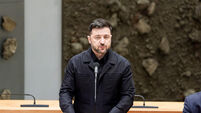Japan orders immediate safety upgrade at nuclear sites
As operators struggle to regain control of the damaged Daiichi nuclear reactors 240 km north of Tokyo, radiation leakage continued, with radioactive iodine in the sea off the damaged plant at record levels. The state nuclear safety agency said the amounts were 3,355 times the legal limit.
Smoke was reported coming from a second damaged nuclear plant site in Fukushima, with authorities citing an electric distribution board as the problem.














